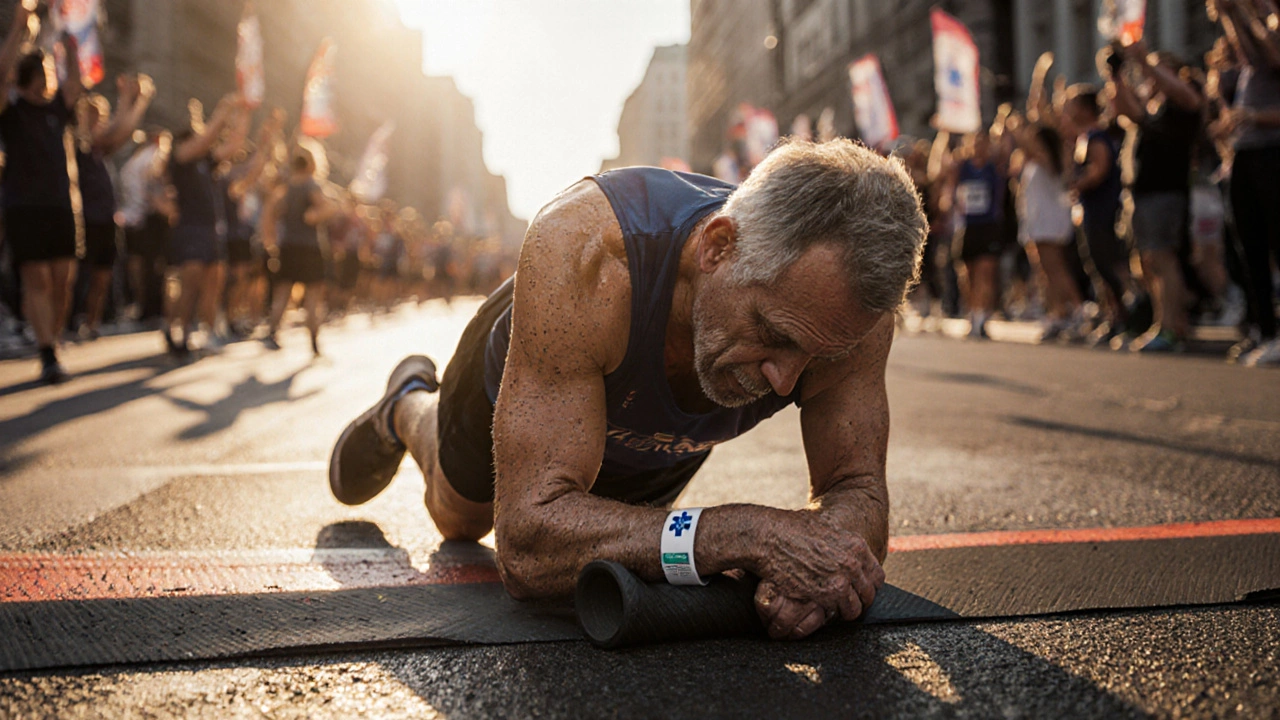Marathon Recovery: Simple Steps to Bounce Back Faster
Crossing the finish line feels amazing, but the days after can be rough. Your muscles are sore, energy is low, and you might wonder how to get back to normal quickly. The good news is that a few easy habits can dramatically speed up recovery and keep you injury‑free.
1. Cool Down and Stretch Right After the Race
Most runners stop moving the moment they see the tape. Instead, keep walking for 10‑15 minutes. Light movement helps flush out waste products like lactic acid and reduces the chance of blood pooling in your legs. Follow the walk with gentle stretches – focus on calves, hamstrings, quads, and hips. Hold each stretch for 20‑30 seconds, never bouncing. This short routine calms the nervous system and prepares your muscles for the healing phase.
2. Refuel with the Right Nutrients
Within 30‑60 minutes of finishing, aim for a snack that combines carbs and protein in a 3:1 ratio. Think a banana with peanut butter, chocolate milk, or a recovery shake. Carbs replenish glycogen stores, while protein kick‑starts muscle repair. Also, hydrate with water and a pinch of electrolytes – especially if you sweated a lot. Skipping this window makes recovery slower and can leave you feeling sluggish for days.
Beyond the immediate snack, keep drinking water throughout the next 24 hours. A simple way to gauge hydration is the colour of your urine – clear to light yellow means you’re on track.
3. Gentle Movement Over Full Rest
Contrary to popular belief, doing nothing for a whole day isn’t the best. Light activities like easy cycling, swimming, or a yoga flow keep blood flowing without adding stress. Aim for 20‑30 minutes of low‑intensity effort the day after the marathon, then gradually increase the duration over the next few days.
These sessions should feel comfortable – you shouldn’t be gasping for breath or feeling sharp pain. The goal is to promote circulation, which delivers nutrients to sore muscles and speeds up waste removal.
4. Prioritise Sleep and Recovery Tools
Sleep is when most repair happens. Try to get 8‑10 hours of quality rest for the first few nights. If you have trouble falling asleep, consider a warm shower before bed, dim lighting, and turning off screens an hour early.
Compression socks or sleeves can also help reduce swelling and improve blood flow. Use them for a few hours after the race or overnight if your legs feel heavy.
5. Listen to Your Body and Plan the Next Run
Everyone’s recovery timeline differs. Some runners feel ready to train lightly after three days, while others need a week. Pay attention to any lingering sharp pain – that’s a sign to back off and maybe see a professional.
When you do start running again, begin with short, easy runs (3‑5 km) at a relaxed pace. Add distance gradually, no more than 10% per week. This approach lets your muscles adapt without overloading them.
Remember, proper recovery isn’t a chore; it’s part of the training cycle that makes you stronger for the next race. Follow these steps, stay consistent, and you’ll find yourself back on the road feeling better than before the marathon.

